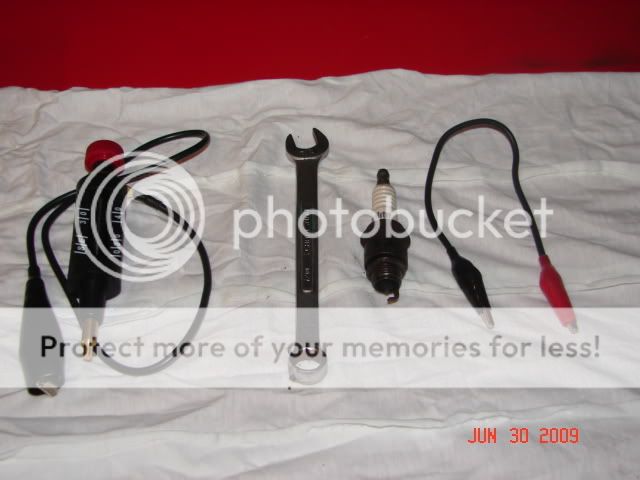When you ask a question here, it’s usually a good idea to tell us:
1. The model of your tractor (2N, 9N, 8N, NAA, etc).
2. If it is 6v or 12v.
3. If it’s an N, if the distributor is on the front or side of the engine.
4. If it has any major parts that are not OEM, such as electronic ignition, a side coil on a front distributor, etc.
In-depth troubleshooting is different depending on the model of the tractor, voltage, ignition system & distributor placement.
We know you have an 8N w/ a side distributor. So when you post back, please add the rest of the info.
And, even if you told us that last week, remember that you’re dealing w/ a bunch of guys w/ CRS.
First, replace the plugs. If you flooded it, they're fouled & it will be it next to impossible to start. You don't need to toss them; heat the tips for a few seconds w/ a propane torch to burn off the invisible spark-robbing deposits from today's additive filled gasoline........or wash them in lacquer thinner.
Next, charge the battery. You need battery voltage to fire the plugs. If you drained the battery trying to start it, you won't have enough left to power the ignition circuit.
Check out tip # 43 for the safe way to jump an N.
After you replace/clean the plugs & charge the battery, you need to narrow the problem down to spark or fuel.
There are three very important tools you always need to have in your N tool box: a 3 inch piece of wire w/ alligator clips on each end, an old spark plug w/ the gap opened to at least 3/16” ( ¼” is better) and a 7/16 box end wrench. And, you really do need a working ammeter. With these tools, you can quickly narrow down most N problems to spark or fuel.
First, check for fuel. Remove the bolt in the bottom of the carb; as long as the fuel is turned on, you should see gas flowing out of the carb. If it’s a dribble, or runs for 5 seconds & stops, or none at all, you have solved half the problem: it’s fuel related. If gas flows well out of the carb & only stops when you turn it off at the sediment bowl, chances are very good it’s not a fuel problem. So, next, crank the engine & look at the ammeter. What is the ammeter doing? Does it show a constant discharge, no movement at all, or does it dip? Next, get the old plug, ground it to a rust & paint free spot on the engine, turn the key on & crank the engine. If the spark jumps the 3/16” gap, you probably don’t have a spark problem. If it won’t jump the 3/16” gap, you have a spark problem. If the ammeter shows a constant discharge, or doesn’t move at all, that also tells you that you have a spark problem. Jump the ignition switch w/ your jumper wire & see what happens. If it runs, you found the problem. If it doesn’t have spark after you jump the ignition switch, post back for more info on further troubleshooting.
If it does not have gas coming out of the carb at a steady stream w/ the bolt out, you have a fuel problem. First, remove the gas cap. Your vent could be clogged & it vacuum locked. If that doesn’t work, tap the carb bowl w/ a hammer handle in case the float is sticking closed. (don’t whack it w/ the head of the hammer; you can crack the bowl). If you still don’t see gas flowing, the N has three fuel screens; one in the brass elbow, one in the top of the sediment bowl & one on the stem of the sediment bowl in the gas tank. Check the screen in the elbow & the screen in the top of the sediment bowl. (don’t worry about the one in the tank) Both probably need to be cleaned. If you have the fuel knob turned on all the way, & 1 gallon or less in the tank, it may be trying to feed off of the reserve inlet which is probably clogged. Only open it 2 full turns. Put at least 2 gallons in the tank.
There are ways to check for spark & fuel that work & ways that don't. For example, having gas to the carb is nice, but having it past the float is what counts! That’s why removing the bolt in the bottom of the carb is the way to do it. And, same thing w/ spark at the plugs. Some folks think that checking for spark means pulling a plug wire off & looking for one. Well, it's the distance the spark jumps at the plug that gives you the info you want. It takes about 17kv to jump a 3/16" gap & 22kv to jump ¼” in the open air, so that's why you need to use a spark plug. Or, a store bought plug checker. Remember, it’s 14psi outside of the engine & about 90psi at a 6:1 compression ratio in the cylinders & compressed air crates electrical resistance, so you really need the 17-22kv to fire the plugs when the engine is running. There are other good ways to check for fuel & spark, but these ways work for me.
50 Tips

